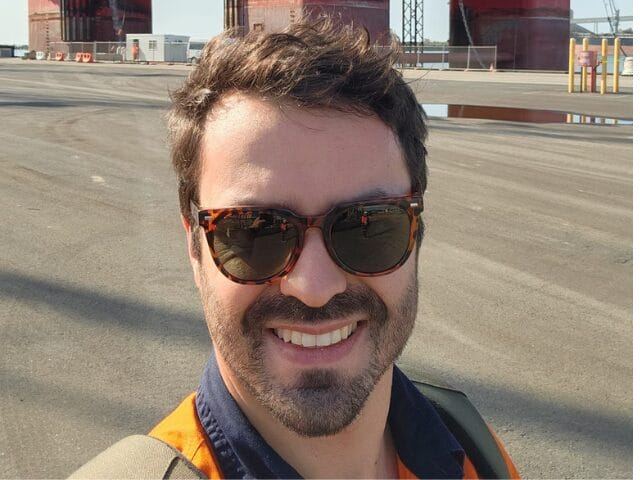
Leigh-Roy van den Berg is a Senior Associate Occupational Hygienist within the WHS, Hazardous Materials, and Occupational Hygiene team in Perth. As a Certified Occupational Hygienists with over eight years’ experience Leigh-Roy is actively helping clients navigate their way around the short and long-term impacts of health hazards in the workplaces.
Silicosis, a deadly lung disease caused by inhaling tiny particles of crystalline silica. Following recent changes to Australian legislation in the management of crystalline-silica risk, Leigh-Roy here shares what employers and workers need to know about these changes and how everyone plays a part in minimising risk to help keep people safe at work.
What is crystalline silica?
Crystalline silica is a naturally occurring mineral found in various construction materials such as concrete, bricks, tiles, and stone. It is commonly encountered in activities like cutting, drilling, grinding, or polishing these materials. The fine dust generated during these activities can be inhaled, posing serious health risks.
Where is crystalline silica found?
Crystalline silica is found in a wide range of construction and manufacturing materials, including shale, sandstone, concrete, bricks, and manufactured stone. Workers are most likely to be exposed to silica dust during tasks like excavation, tunnelling, road profiling or any activities that generate fine dust particles.
What do the new regulations mean for me?
The new regulations, effective from 1 September 2024, mandate stricter control measures for processes involving crystalline silica. If your work involves handling materials with 1% or more crystalline silica, you must conduct a risk assessment, conduct air monitoring and implement a silica risk control plan and health monitoring, and report any exceedances of Workplace Exposure Standards (WES). This applies to industries such as construction, tunnelling, quarrying, and more.
What are the health hazards from exposure to crystalline silica?
Inhalation of respirable crystalline silica (RCS) dust can cause severe lung diseases, including silicosis, chronic bronchitis, and lung cancer. Silicosis is particularly dangerous as it results in irreversible lung scarring, leading to decreased lung function, severe shortness of breath, and potentially heart failure. The disease can develop over different time frames, from chronic exposure over many years to acute cases after short-term exposure to very high levels of silica dust.
Who is at risk of exposure to crystalline silica?
Workers in industries such as construction, demolition, quarrying, tunnelling, and stone cutting are at the highest risk of exposure to crystalline silica. Those involved in tasks that generate fine dust particles, such as cutting, sanding, drilling, or grinding materials containing silica, are particularly vulnerable.
“Silicosis isn’t just an issue in mines or with engineered stone benchtops—it’s in industries and processes a lot closer to home. This preventable disease is closer than you think. As employers, protecting your team means protecting families, too.” – Leigh-Roy van den Berg
What can I do to reduce exposure to crystalline silica?
Reducing exposure involves implementing a combination of control measures:
-
- Use water suppression systems to minimise dust generation.
- Employ local exhaust ventilation systems to capture and remove dust at its source.
- Utilize dust extraction tools and systems, especially during high-risk tasks.
- Isolate dust-generating areas and ensure proper housekeeping to prevent dust accumulation.
- Provide workers with appropriate personal protective equipment (PPE), such as respirators, and ensure they are correctly fitted and maintained.
Who may conduct personal exposure monitoring?
A Certified Occupational Hygienist (COH) or recognised equivalent competency under an international certification scheme; Full or Provisional Member of the Australian Institute of Occupational Hygienists; Occupational hygiene technician with the relevant competencies under the supervision or direction of a COH®
What health monitoring and lung screening information should I be aware of?
Employers are required to provide health monitoring for workers who are at significant risk of exposure to crystalline silica. This includes regular lung screenings to detect early signs of silicosis or other respiratory conditions. Workers relying on personal protection equipment to control exposure must also be included in health monitoring programs. Records of health monitoring must be kept for at least 30 years.
Where can I find out more?
Talking to any of Tetra Tech Coffey’s Certified Occupational hygienists is a great place to start. Our team are capable and competent in guiding any operation through the intricacies of the newly implemented silica regulations. You can also visit our dedicated crystaline silica page for more information.
Connect with Leigh-Roy: [email protected]